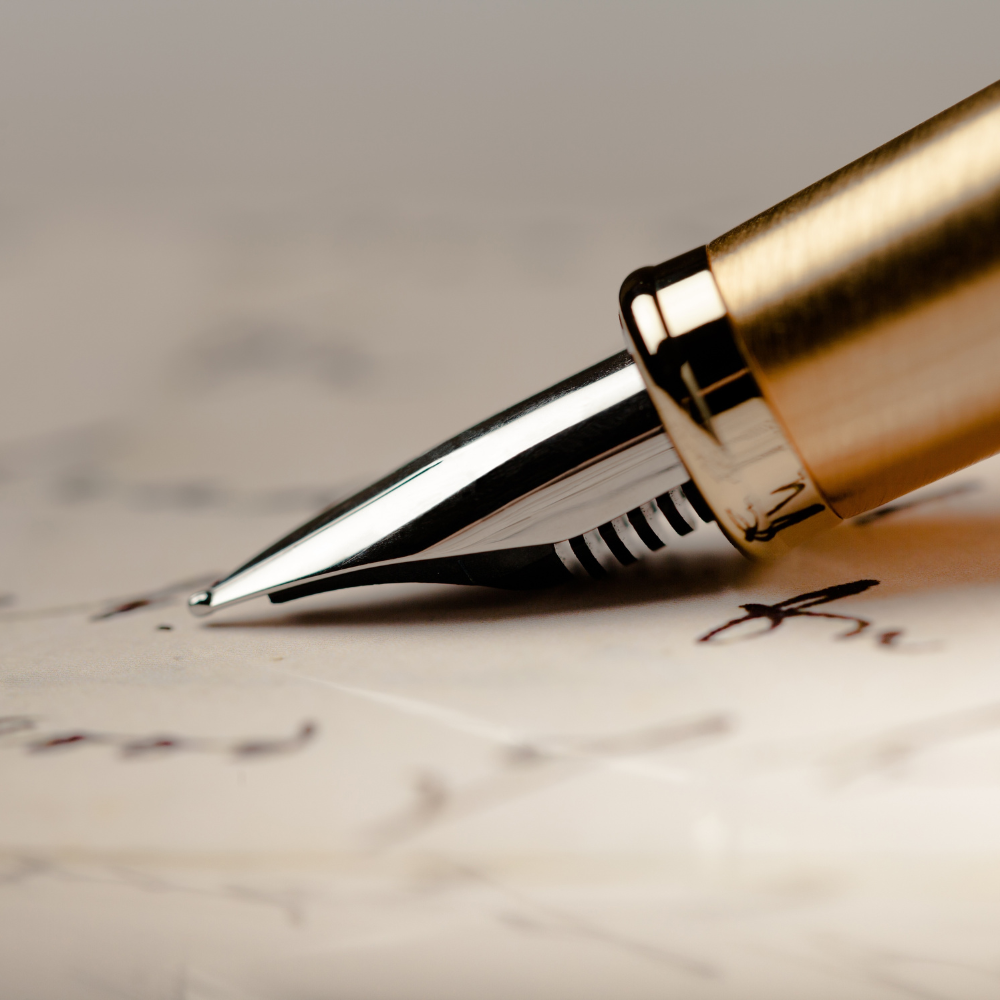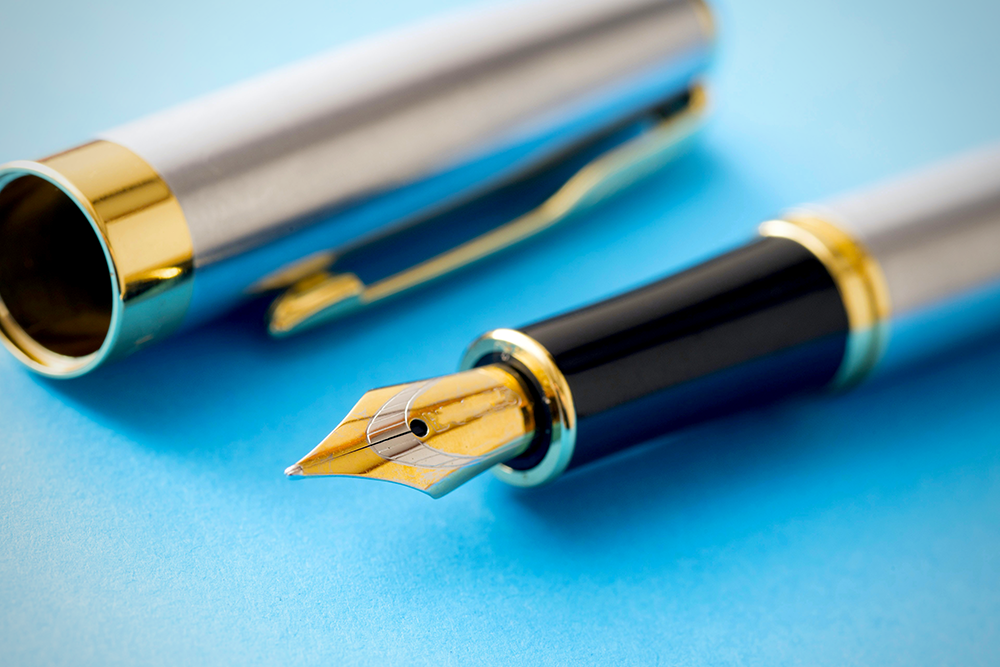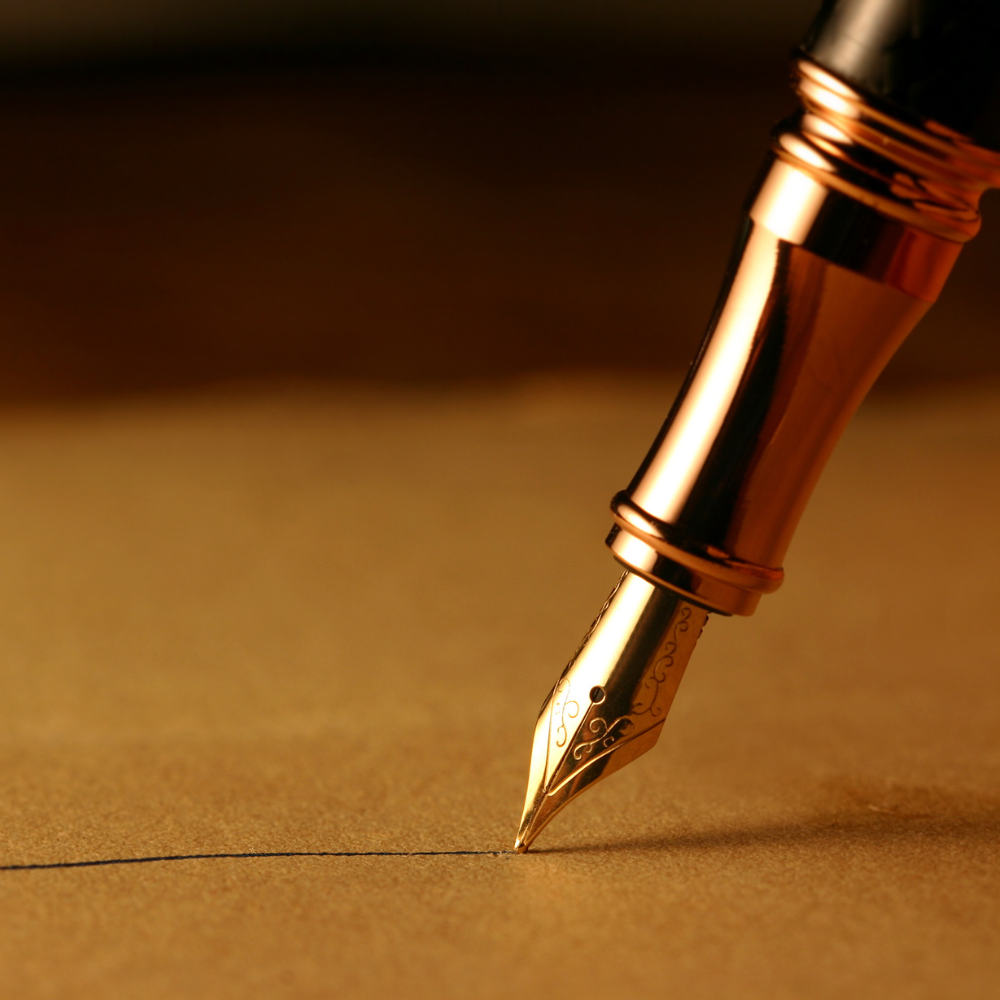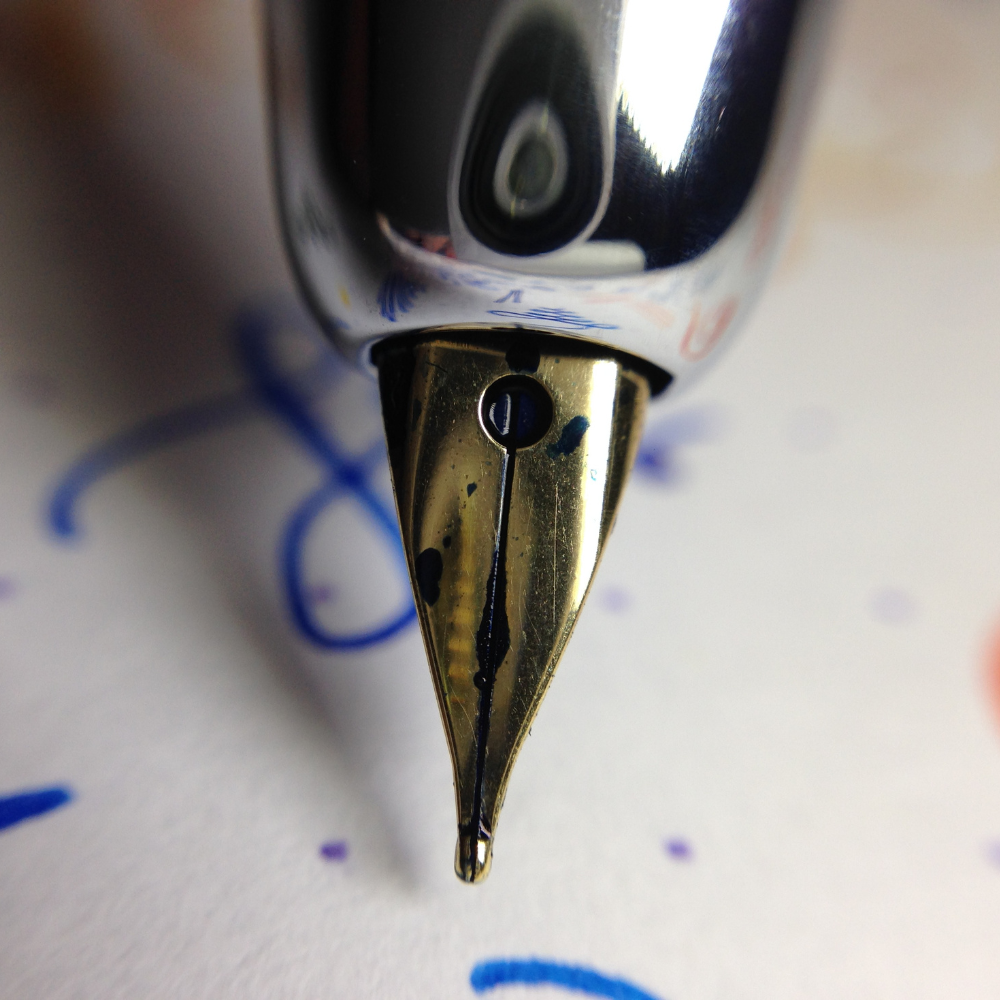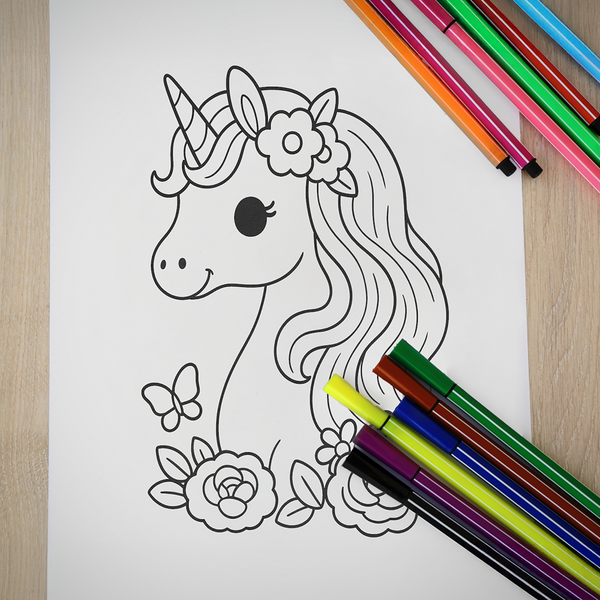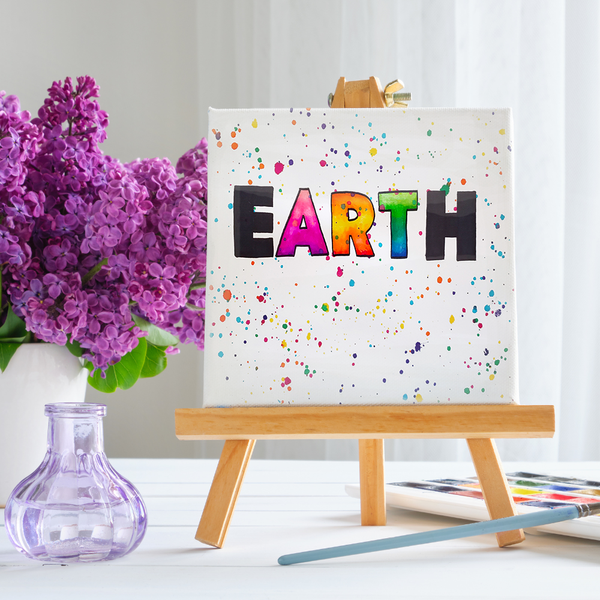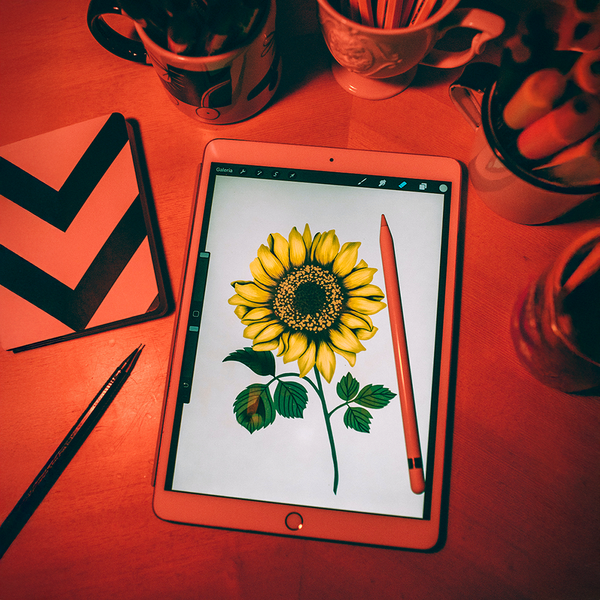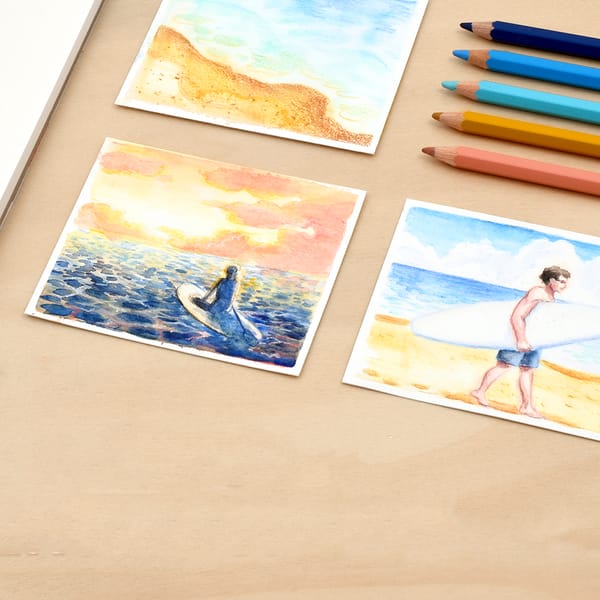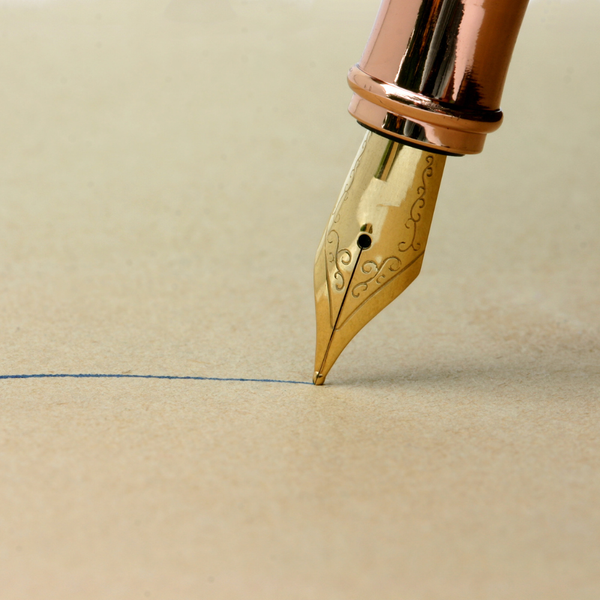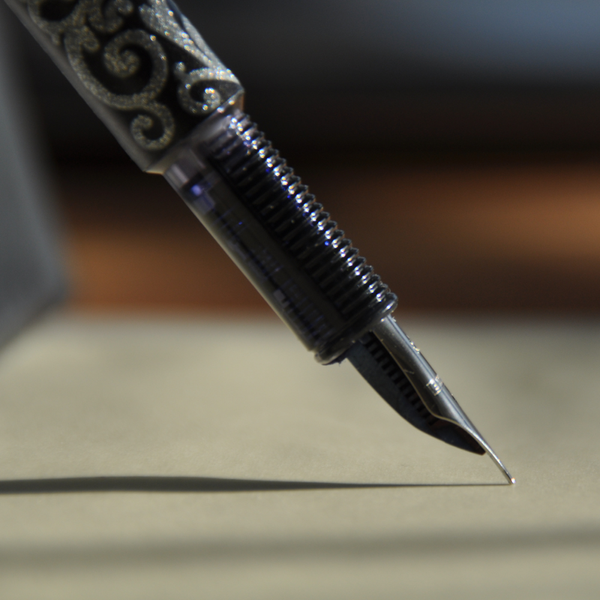Calling all artists!
Are you lost in a sea of nib sizes, not sure which one to choose?
Whether you're a seasoned sketcher or just dipping your brush into the wide realm of art, one thing is for sure – choosing the right nib size can make all the difference in your creative process.
From delicate lines that gracefully dance across the page to bold strokes that shout with powerful expression, the nib size you use can transform your sketches from good to jaw-droppingly incredible!
But with so many options out there, how do you know which nib size is the perfect fit for you?
Well, fear not, because we've got you covered!
In this blog post, we'll dive deep into the world of nib sizes, exploring the diverse range of pens and nibs available to artists of all levels.
Say goodbye to those frustrating moments when your lines are either too thick or too thin, making your artwork look amateurish.
Get ready to take your sketches to a whole new level of precision and detail.
So, grab your favorite sketchbook, sharpen that pencil, and get ready to embark on a journey to find your perfect pen nib size – it's going to be sketch-tacular!
Let's dive in and find your perfect pen nib because every stroke counts!
Key Takeaways:
- Understanding nib sizes is crucial for selecting the right tool for sketching.
- The choice of nib size affects line width, ink flow, and overall drawing experience.
- Fountain pens, dip pens, and technical pens offer a variety of nib options for artists.
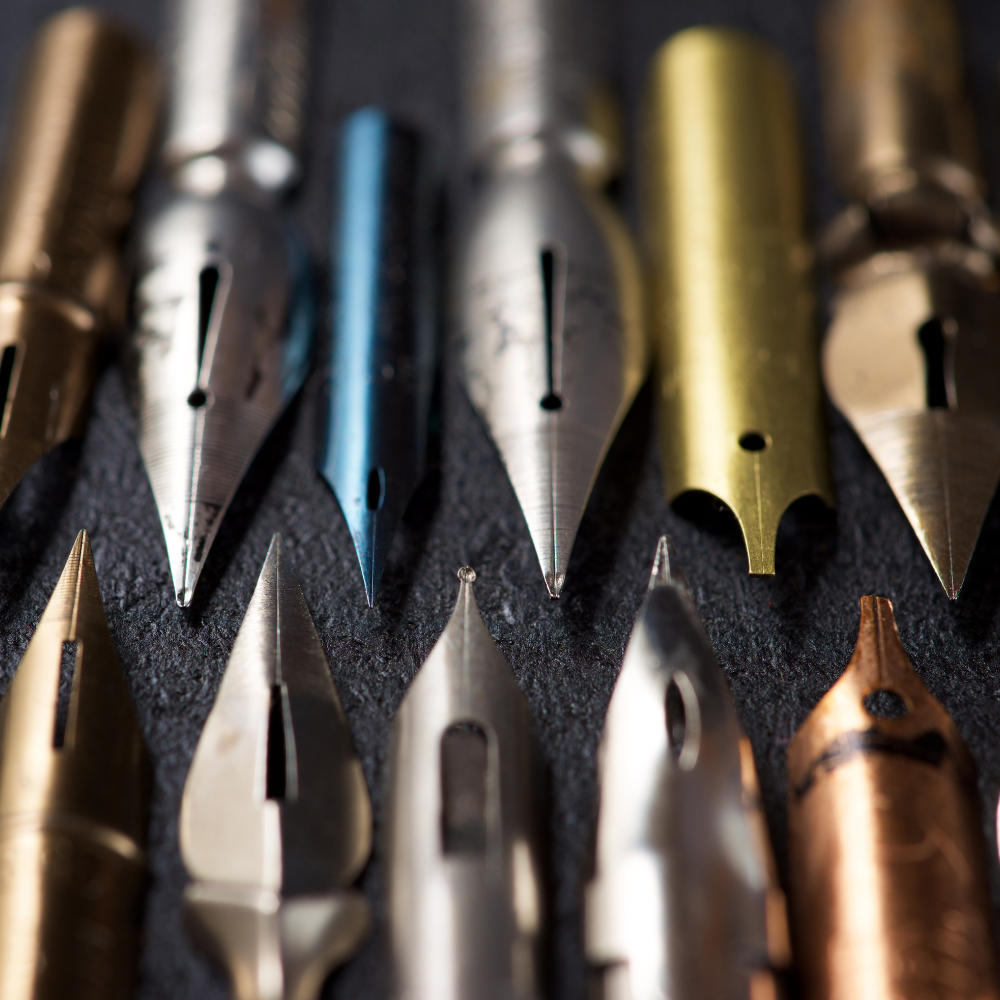

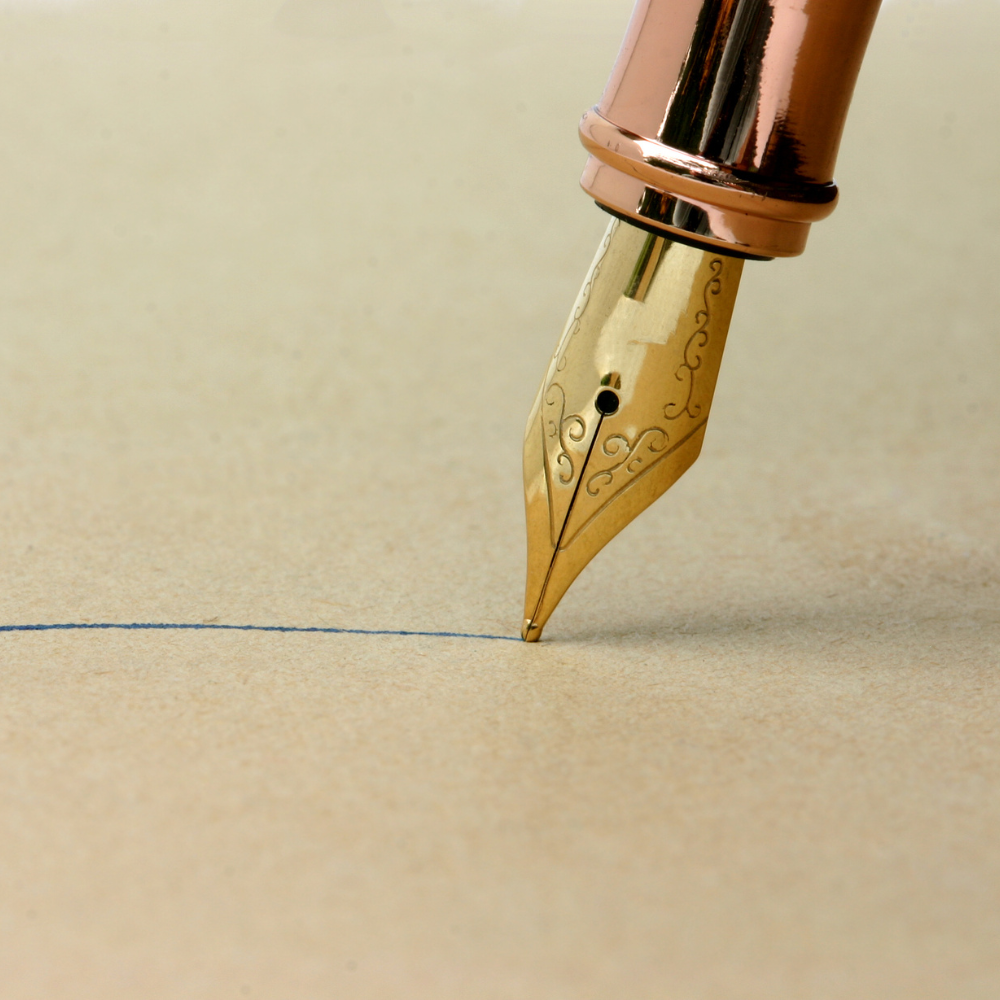
Sketching with Pens
Sketching is an art form that requires precision, control, and the right tools to bring your vision to life.
One of the most important decisions an artist can make is choosing the correct nib size for their sketches.
Sketching is a beautiful and cathartic form of self-expression, but choosing the wrong pen or nib size can leave even the most skilled artist feeling frustrated with their art.
A pen with the incorrect nib size can disrupt the natural flow of your sketches, impacting your artistic journey terribly.
On the other hand, using the right nib can enhance your skills and take your artwork to new heights!
When it comes to sketching, pens are a versatile and popular choice among artists.
They offer precise lines, easy control, and the ability to create varied line widths with different nib sizes.
But before we get into the nitty-gritty of nib sizes, let's briefly explore the types of pens commonly used for sketching.
Fountain Pens: A Popular Choice for Sketchers
Fountain pens are a favorite among sketchers and artists for their smooth ink flow, versatility, and quality of line.
They have an internal reservoir that holds liquid ink, which is then delivered through the nib onto the paper.
Fountain pens come in a variety of nib sizes, from extra-fine to broad, making them suitable for both detailed sketches and bold strokes.
With a range of nib sizes available, from extra fine nib (EF nib) to broad and even fude nib, fountain pens offer a level of control that is hard to match.
Brands like Lamy Safari and Platinum Carbon Pen are renowned for their reliable performance in sketching.
The Lamy pens, known for their triangular grip, are particularly popular for those with big hands or who prefer a more ergonomic hold.
Dip Pens: For the Traditionalists
Dip pens have been used by artists for centuries and are still popular among sketchers today; dip pens and calligraphy pens hark back to the days of classic illustration and calligraphy.
They offer a unique experience with their flexible nib options that can create varying line thicknesses based on the pressure applied.
They consist of a handle, called a holder, and a removable nib that is dipped into ink before each stroke.
This allows for more control over the amount of ink on the nib, resulting in precise and consistent lines.
Calligraphy nibs, in particular, are sought after for their ability to produce dynamic line weights, making them a top choice for artists who prioritize expressive line work in their sketches.
Like fountain pens, dip pens come in various nib sizes, including flexible options that allow for line variation.
Technical Pens: Precision and Consistency
Technical pens are the go-to for artists who require consistent line widths and precision.
Also known as technical drawing pens, technical pens are a modern alternative to traditional dip pens.
They use a refillable ink cartridge and have a needle-like tip that creates precise lines with consistent ink flow.
These pens, often used by architects and engineers, come with standard nib sizes that ensure uniformity in line thickness, making them ideal for detailed sketches.
Brands like Faber Castell and TWSBI Eco are known for their high-quality technical pens that are perfect for detailed work.
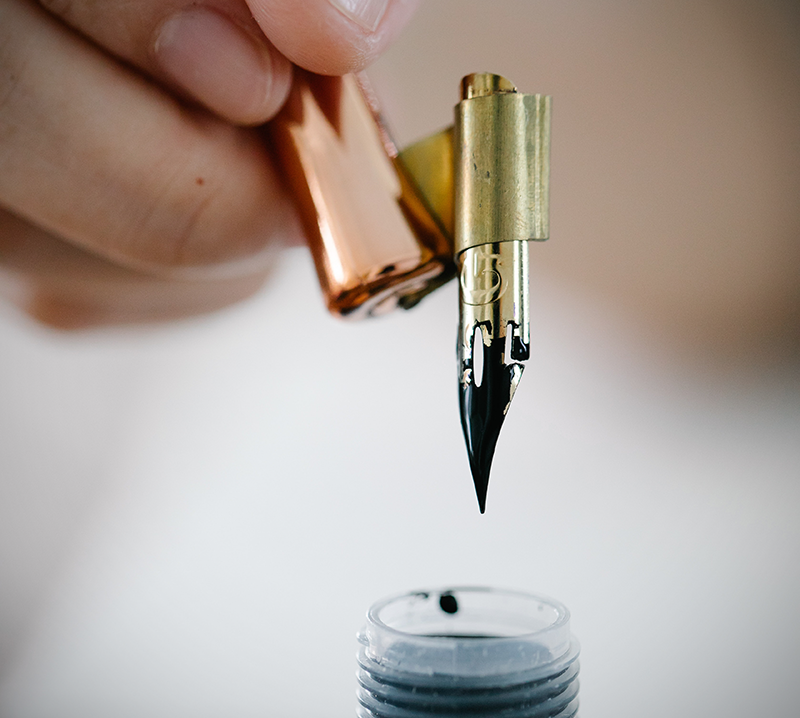
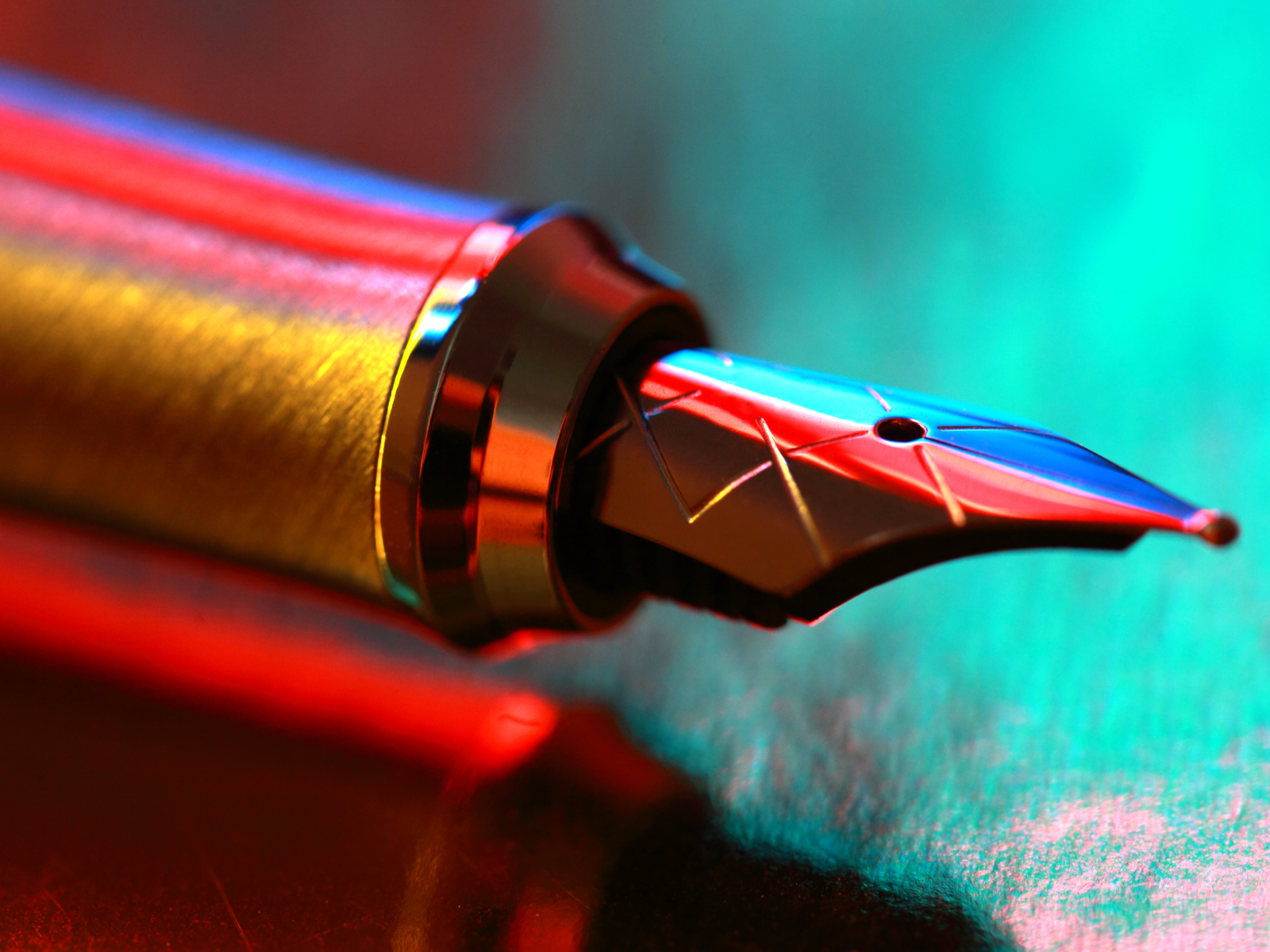
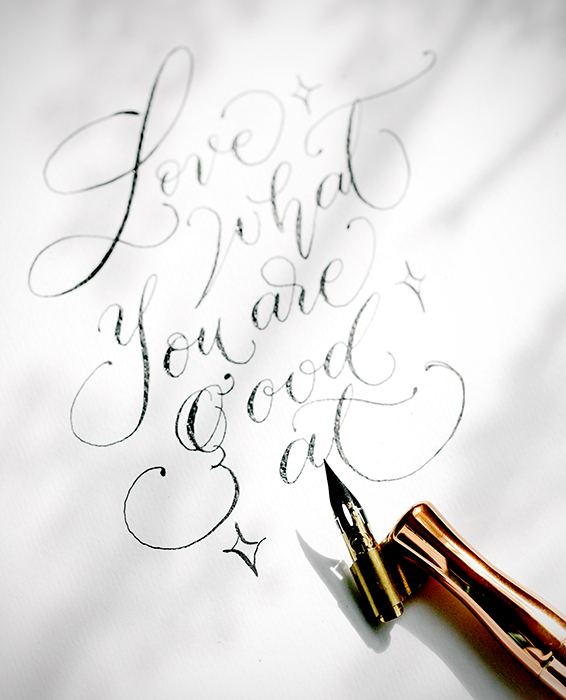
The Importance of Nib Sizes in Sketching
Nib sizes play a pivotal role in the outcome of your sketches.
They determine the line width, ink flow, and the overall feel of your drawing on paper.
From fine lines that capture intricate details to bold strokes that define the structure, the nib size can dramatically alter the appearance of your artwork.
Artists who love sketching know that the right nib can make all the difference in their work.
Experimenting with different nib sizes can help you find the perfect fit for your style and creative process.
The nib size of a pen can be the difference between creating something magical and trashing a sketch in frustration.
The first thing to understand is that nib sizes are not standardized and can vary from brand to brand.
However, nibs usually range from extra-fine (EF) to broad (B), with the tip of the nib determining its size.
A smaller tip results in a finer line, while a larger one creates a bolder stroke.
Medium Nib: The Versatile Option
A medium nib is often recommended as the first pen for those new to fountain pen sketching.
It strikes a balance between fine and broad, allowing for a variety of line weights without changing tools.
The medium nib is an important factor for those who want flexibility in their sketching style without compromising on the quality of their lines.
This nib size is also ideal for those who like to add texture and depth to their sketches with cross-hatching techniques.
Fine Nib: The Detail King
Fine nibs are ideal for artists who absolutely love capturing the minutiae in their sketches.
It's perfect for creators who prefer delicate lines, intricate details, and precision in their work.
It offers superb control over the line thickness, making it an excellent choice for technical drawings and highly detailed sketches.
The EF nib, in particular, is perfect for those who need to produce thin, precise lines.
The fine nibs' ability to create delicate details makes them a staple for illustrators and anyone who values precision in their work.
Fine nibs are also popular among artists who use sketching as a form of journaling or for adding small drawings to their notes.
Broad Nib: The Statement Maker
Broad nibs are the go-to for those who want their sketches to make a bold statement.
They produce thick, robust lines that stand out on paper and add character to your sketches.
Artists who prefer quick, bold strokes and a looser sketching style will love the broad nib's ability to create dynamic lines effortlessly.
It's also perfect for filling in large areas with solid blocks of ink.
Extra Nib Options: For Special Effects
Some pen brands offer additional nib options, such as stub or italic nibs, that can create unique effects in your sketches.
These nibs have flat edges, unlike the rounded tips of traditional fountain pen nibs, making them perfect for calligraphy and adding texture to your sketches.
They produce thick horizontal lines and thin vertical lines when held at a specific angle, adding an artistic touch to your work.

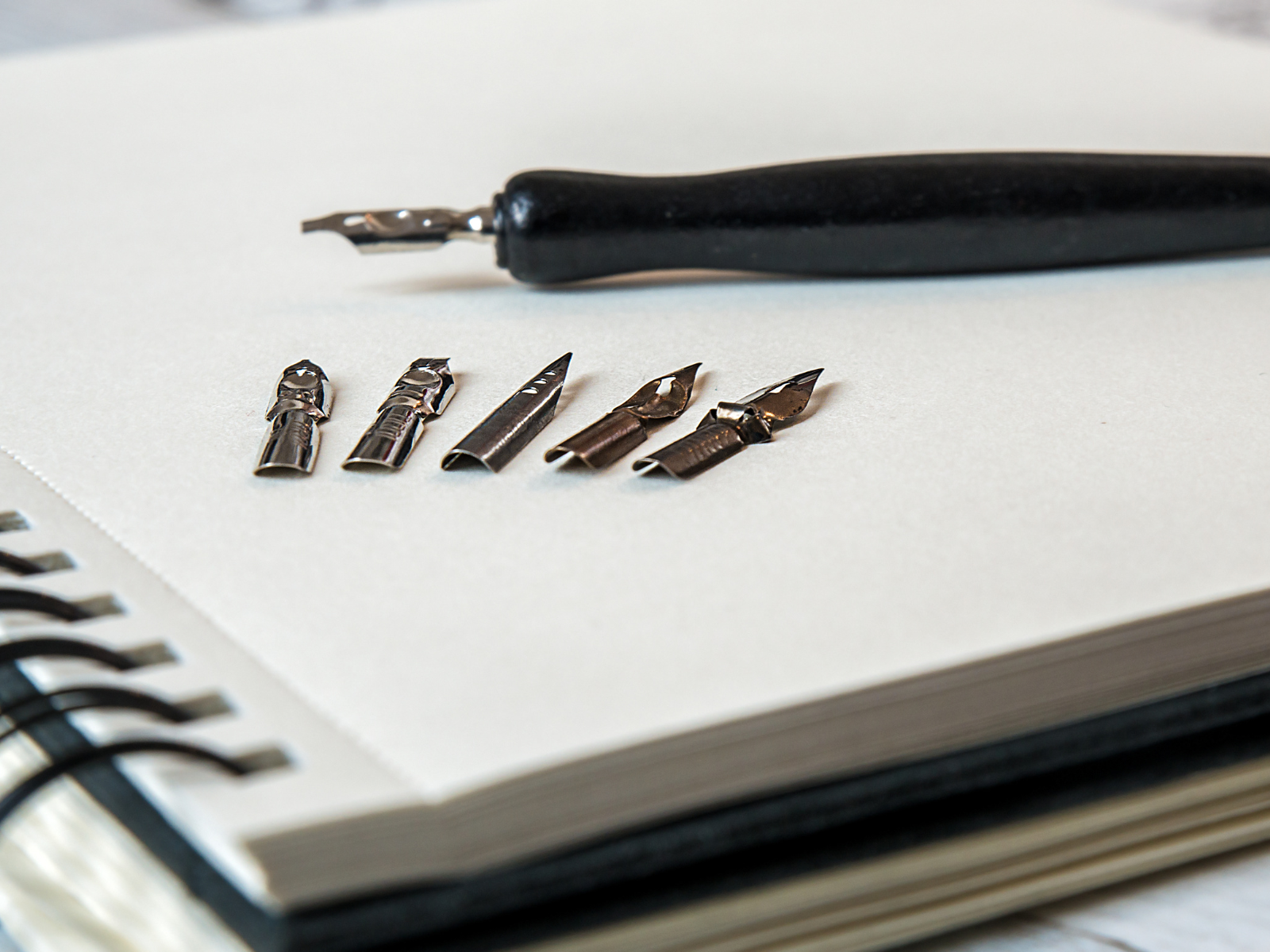

The Art of Line Weight in Sketching
Line weight plays a crucial role in the depth and dimension of a sketch. It's a technique often discussed in art blog posts and tutorials, as it can dramatically affect the perception of your drawn work.
By varying the pressure on your pen, you can create lines that fade into the background or come to the forefront, guiding the viewer's eye through the composition.
This is where a high-quality pen with a responsive nib, such as those from Goulet Pens, becomes invaluable.
The ability to control line weight with precision can transform a flat drawing into a lifelike masterpiece.
Urban sketching, in particular, benefits from the effective use of line weight.
As artists capture bustling city scenes, the differentiation between background architecture and foreground subjects is essential.
A fine nib can delicately detail distant figures, while a broader calligraphy nib can emphasize the solidity of nearby structures.
The choice of pen and nib size becomes a strategic decision in the artist's process.
By experimenting with different tools and techniques, sketchers can develop a signature style that resonates with their audience, encouraging viewers to pause, search, and engage with the artwork.
Selecting the Right Nib Size
Now that we've covered the basics of nib sizes, you might be wondering which one is the best fit for your sketching needs.
The answer is simple – it depends on your personal style and preferences.
As an artist, experimenting with different nib sizes can help you find the perfect tool for your sketches.
Some artists prefer to use multiple pens with different nib sizes to add depth and variety to their work, while others stick to their favorite nib and develop a unique style with it.
When choosing a nib size, consider the type of lines you want to create, the level of detail required in your sketches, and your preferred sketching style.
Don't be afraid to try out different nib sizes and see how they affect your work – this is part of the fun and growth in your artistic journey.
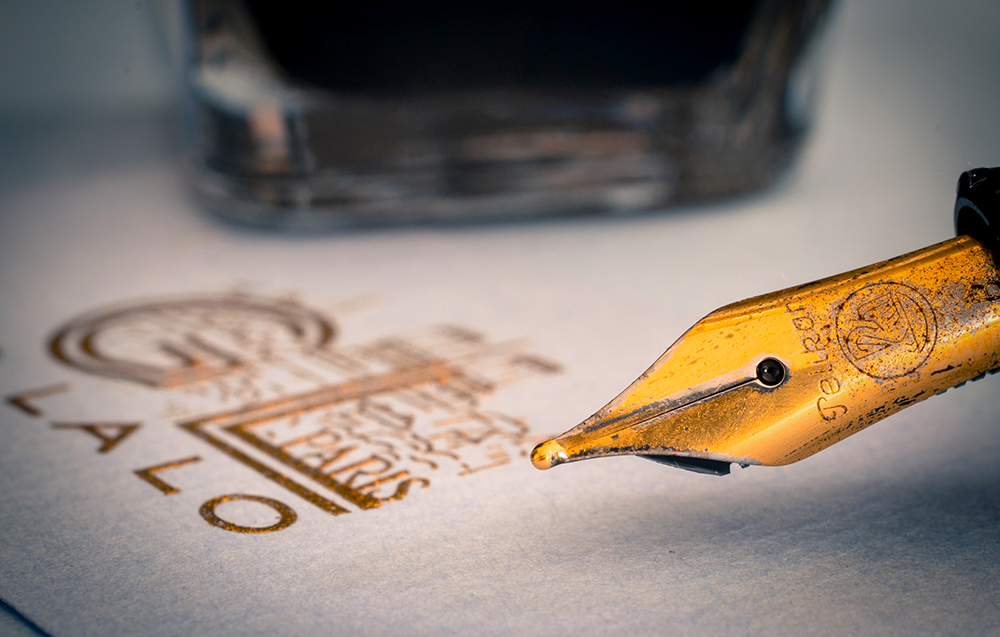
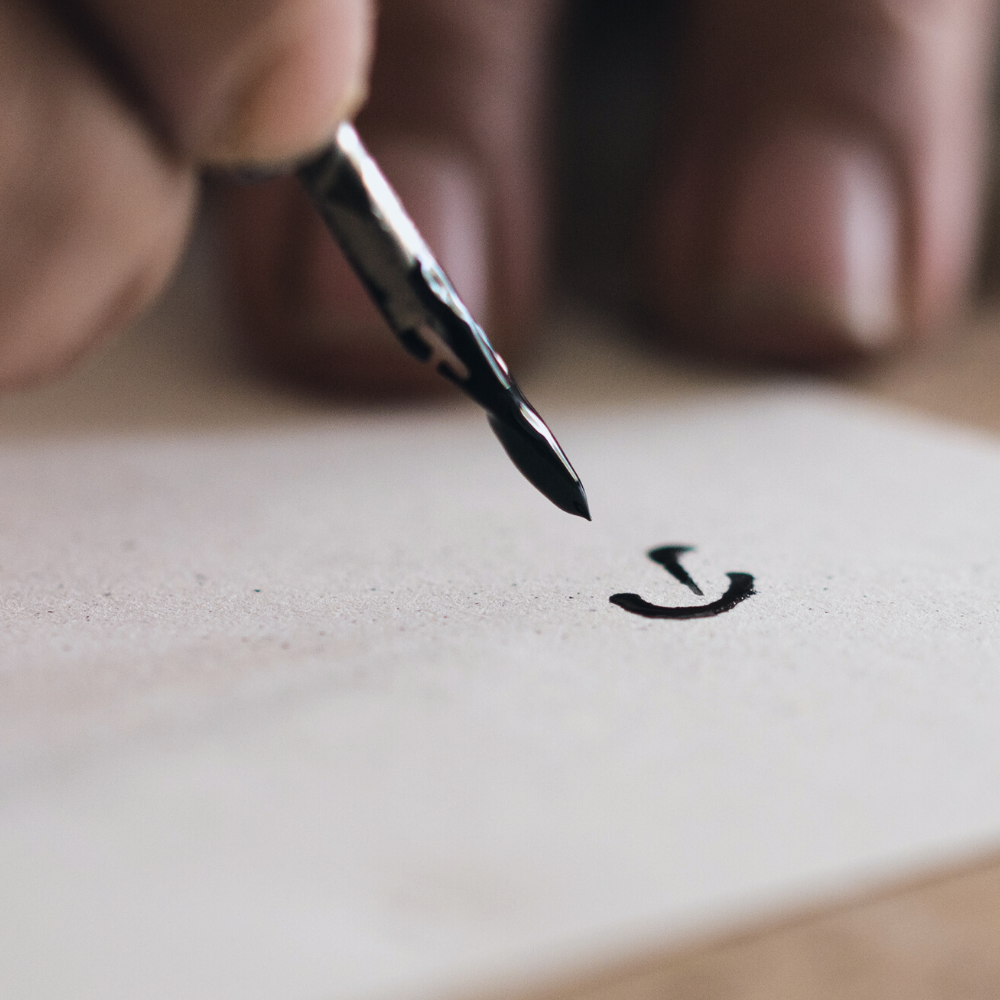

The Evolution of Nib Materials
The materials used to craft pen nibs have evolved significantly over time, each bringing its unique qualities to the sketching table.
Initially, nibs were made from reeds and later transitioned to metals and metal alloys.
Today, artists can choose from a variety of materials, each with distinct benefits that can enhance the sketching experience.
Gold nibs, often found in high-end fountain pens, offer a soft and responsive feel, allowing for a fluid and expressive line that can add character to any sketch.
Steel nibs, on the other hand, are known for their durability and provide a consistent line, making them a reliable choice for artists who value precision in their work.
Titanium nibs offer a blend of flexibility and strength that enables more delicate line work.
These modern materials have opened up a world of possibilities for artists, allowing them to push the boundaries of traditional sketching techniques and explore new styles.
This evolution reflects the industry's response to artists' needs, balancing performance with practicality.
Broadening Your Sketching Horizons with Lamy Pens
Lamy pens have become synonymous with quality and versatility in the world of sketching.
Artists often note in their blog posts the brand's commitment to ergonomic design and smooth ink flow, which is particularly beneficial for those who spend hours with pen in hand.
The Lamy pen range includes options that cater to various nib preferences, from fine to broad, ensuring that every line weight contributes precisely to the envisioned piece.
Whether you're urban sketching or detailing in a studio, a Lamy pen can be a game-changer in your artistic arsenal.
The brand's dedication to innovation is evident in their calligraphy nib options, which are a favorite among artists who write and draw.
These nibs allow for a dynamic range of line weights, from the thinnest hairline to the boldest stroke, perfect for adding character and depth to sketches.
Moreover, Lamy's easy-to-use cartridge and refill system means that artists can spend less time on maintenance and more time on creation.
The convenience of a Lamy pen makes it a staple in any sketcher's toolkit, as echoed in numerous comments and reviews across art supply platforms like Goulet Pens.

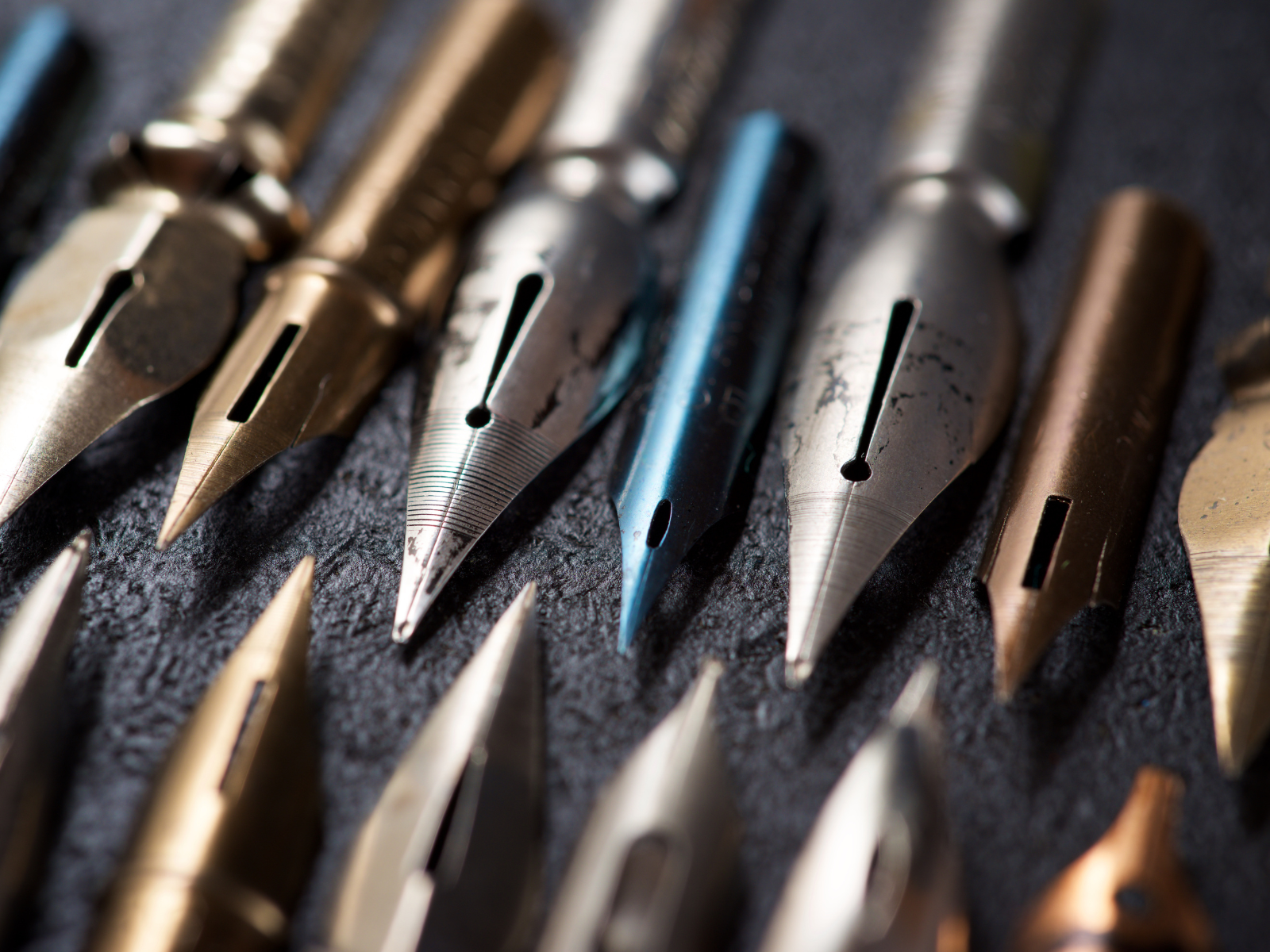
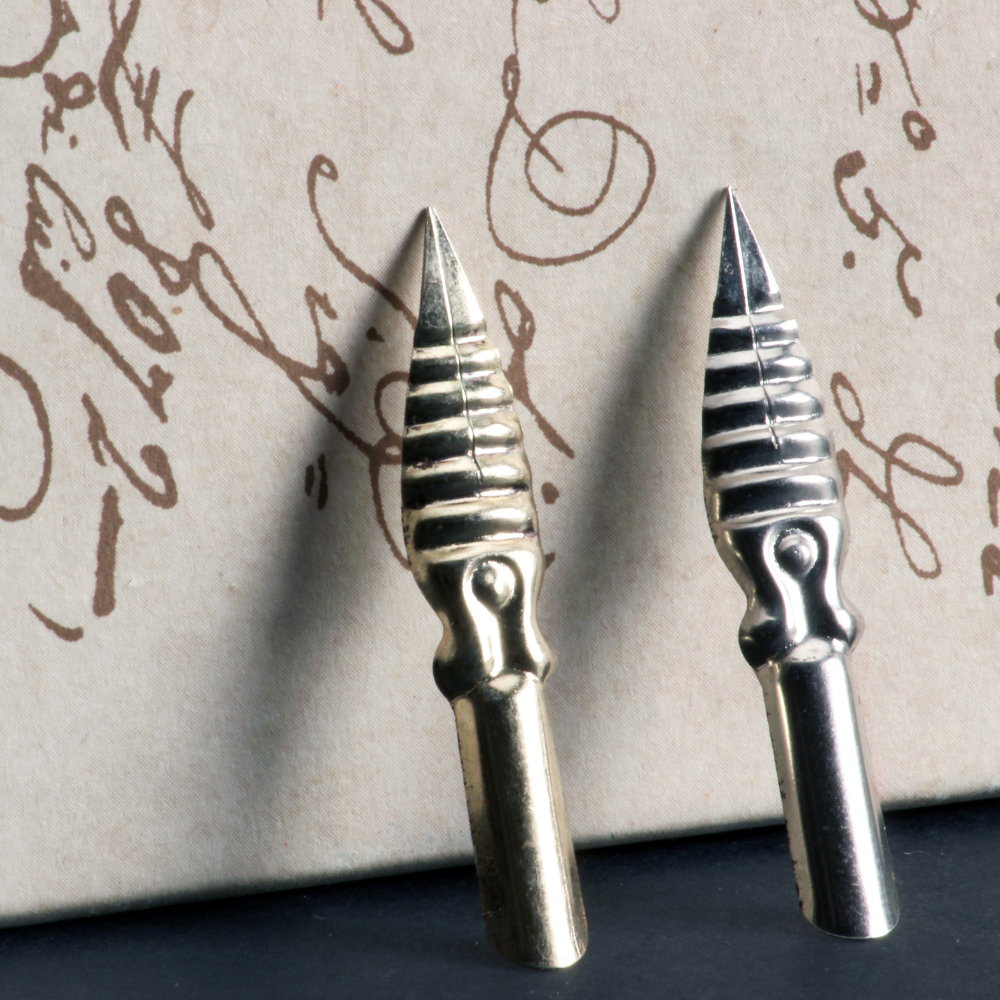
Synergy Between Digital and Traditional
In the digital age, the intersection between traditional sketching and digital tools has become a focal point for many artists.
Digital drawing tablets and stylus pens have introduced a new dimension to sketching, allowing for an infinite range of nib sizes and styles at the artist's fingertips.
The pressure sensitivity and tilt recognition of these tools mimic the experience of using a traditional pen, but with the added benefits of undo buttons and layering capabilities.
This synergy has not only expanded the possibilities for artists but has also sparked discussions in blog posts and comments about the future of sketching in a digital world.
Despite the convenience of digital tools, many artists still cherish the tactile feel of pen on paper.
The act of sketching with a physical pen nib creates a direct connection between the artist and their work, a sentiment often echoed in the comments of art-focused blog posts.
The choice between digital and traditional methods is a personal one, influenced by the artist's style, the nature of the project, and the desired outcome.
As technology continues to advance, the conversation around these choices remains a vibrant and evolving part of the art community's dialogue.

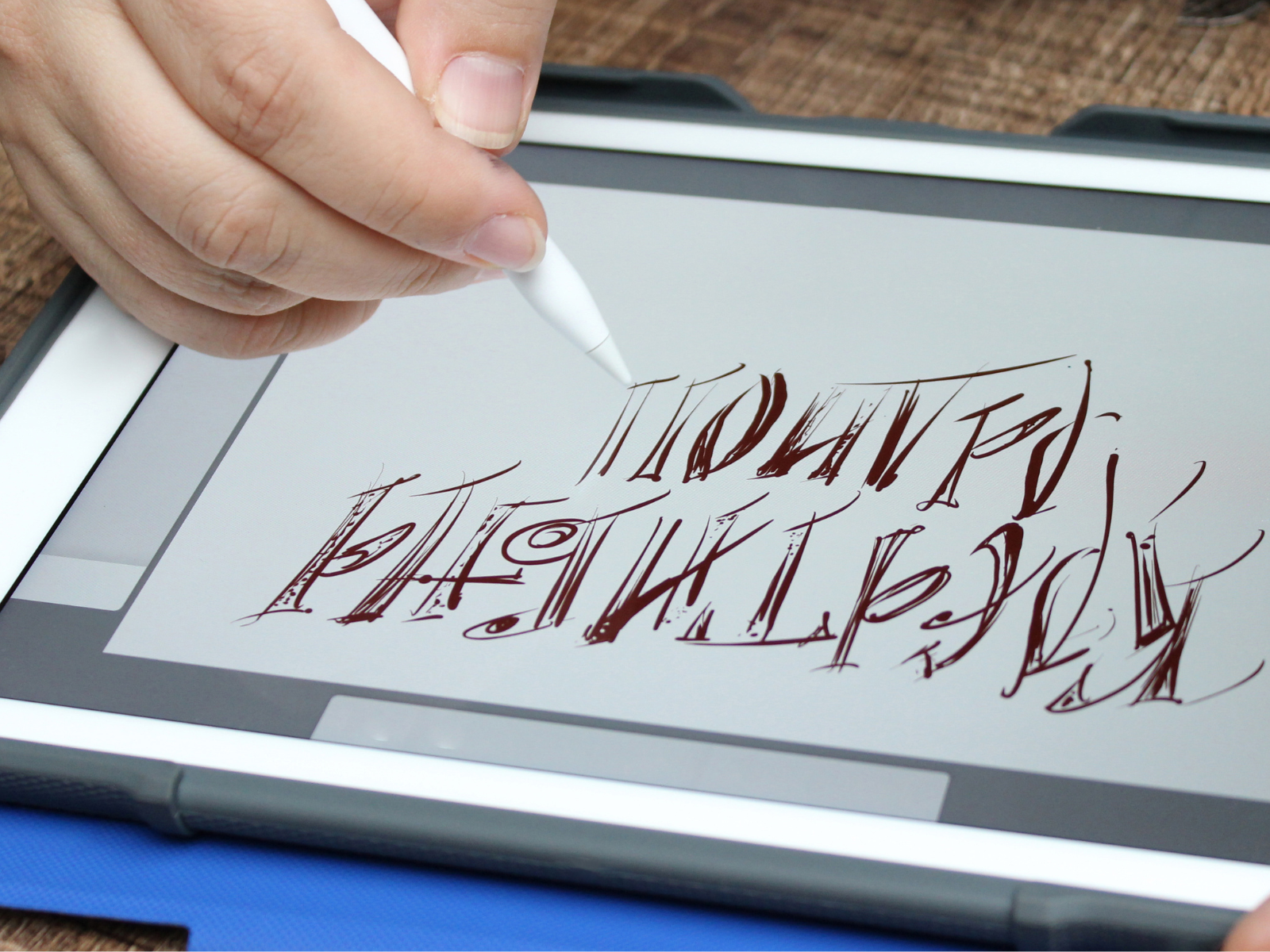
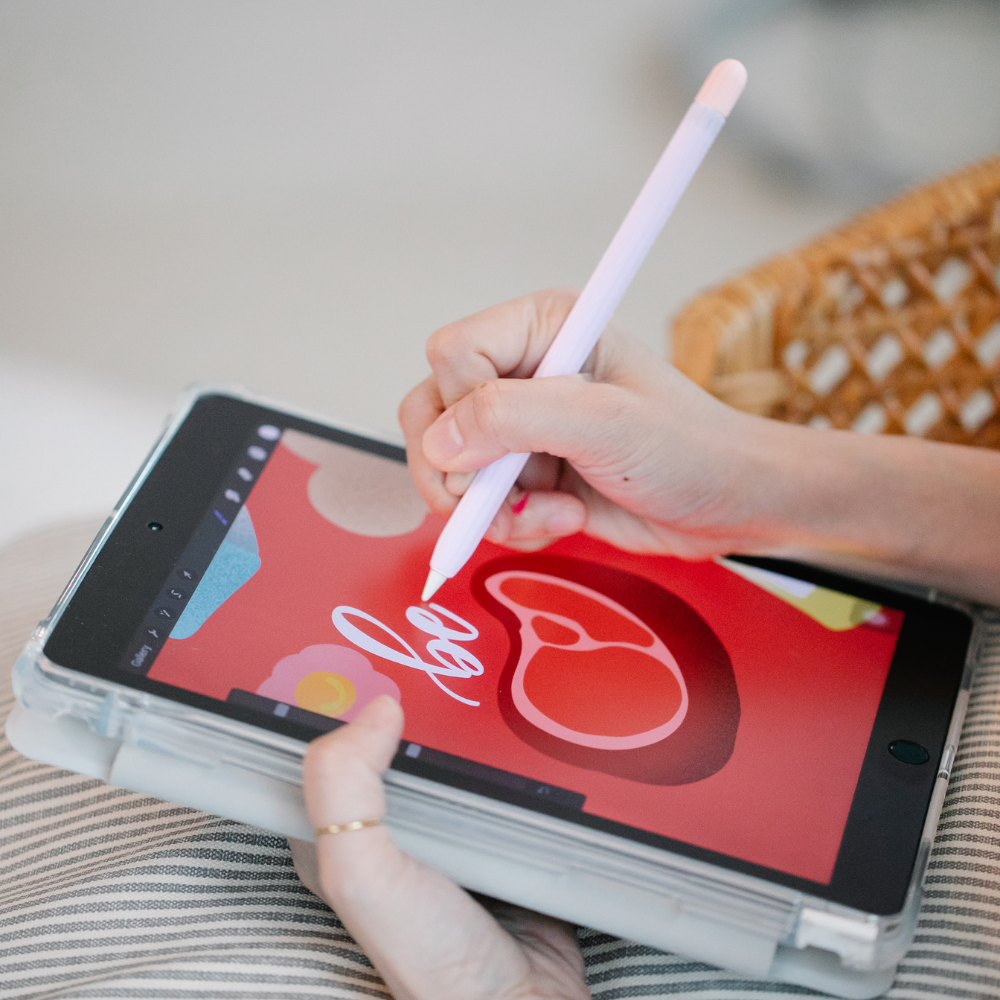
Choosing the Right Ink and Paper
The type of ink and paper you use is just as important as the nib size.
Inks come in various viscosities and colors, and the way ink flows from the nib onto the paper can affect the final result.
Similarly, the texture and quality of the paper can influence how the ink sits and dries, which in turn affects the line quality.
It's essential to consider these factors when selecting your sketching materials.
For example, a nib that provides thin lines with one type of ink may produce thicker lines with another.
Similarly, the same nib on different types of paper will produce different results.
Some artists prefer to use waterproof inks when sketching outdoors or when working with watercolor washes.
Others opt for archival-quality inks that won't fade over time.
The choice of ink and paper ultimately depends on the artist's preference and the intended use for the final piece.
The Role of Personal Style and Preference
Ultimately, the choice of nib size is a personal one.
It should reflect your style, the kind of work you produce, and your comfort level.
Whether you prefer the Pilot Falcon for its flexible nib or the Lamy Safari for its ergonomic design, the best nib is the one that feels right for you.
With the wide range of nib sizes and materials available, artists have endless possibilities to explore and create their unique styles.
So go ahead, experiment with different nibs, and discover the one that truly speaks to your artistic voice.
As your style evolves, don't be afraid to change up your tools and try new things – after all, variety is the spice of life, and in this case, the spice of sketching.
Don't be afraid to experiment with different size nibs and pen types.
What works for one artist may not work for another.
Try out various nib sizes to see how they affect your line work, and don't hesitate to mix and match until you find the perfect combination for your sketching needs.
Caring for Your Sketching Pens
Proper maintenance of your pens is crucial for their longevity and performance.
Regularly cleaning your fountain pens, changing ink cartridges, and storing your pens properly will ensure that they continue to produce the quality of lines you expect.
Different types of nibs may require different cleaning techniques, so it's essential to follow the manufacturer's instructions.
With proper care and maintenance, your sketching pens can become long-lasting companions on your artistic journey.
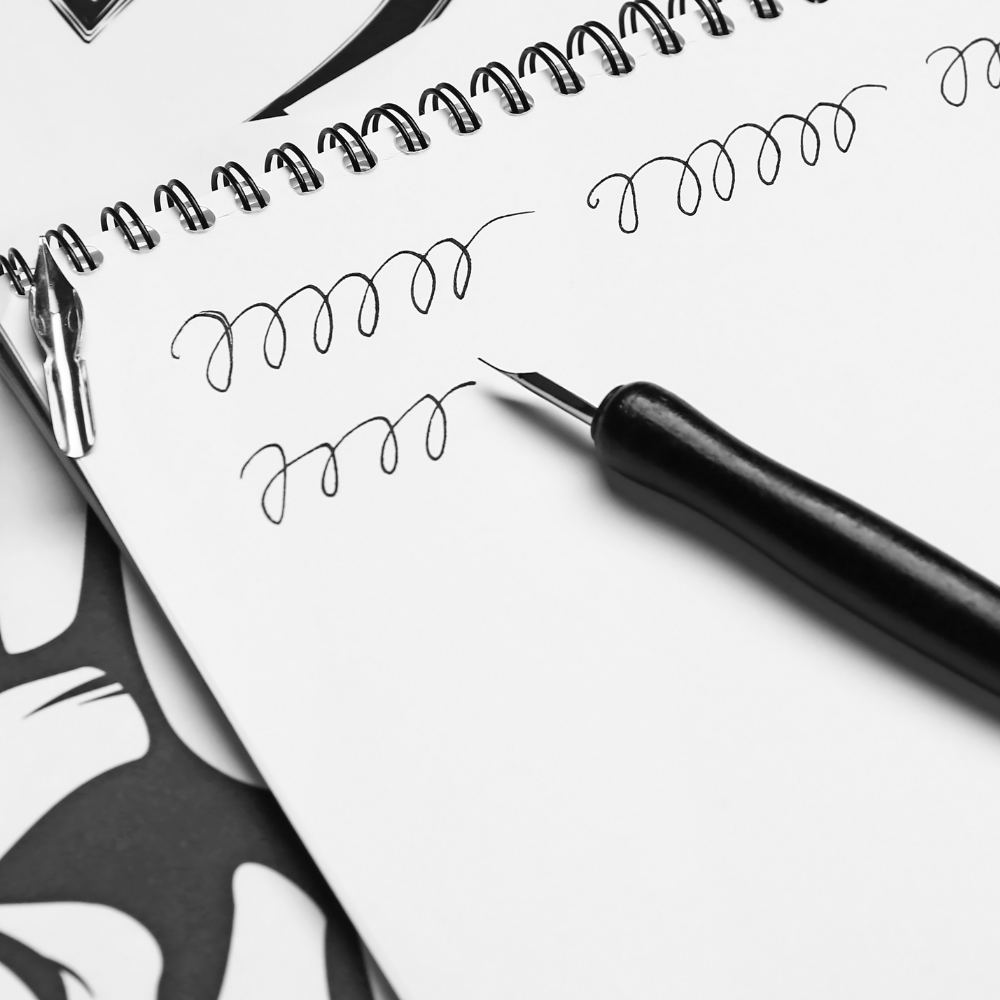

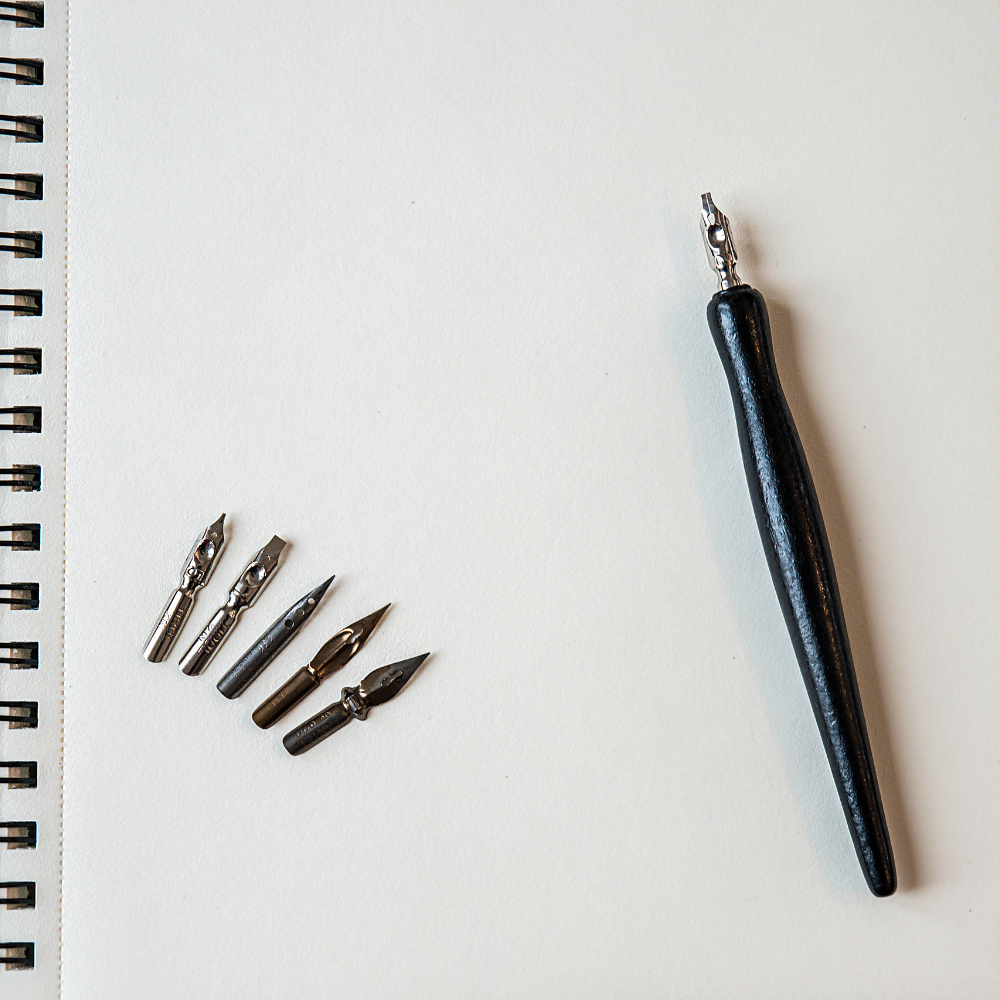
The Community of Fountain Pen Sketchers
Joining a community of fountain pen sketchers can be a great way to learn and share experiences.
Online forums, blog posts, and video tutorials are excellent resources for new comments, tips, and inspiration from fellow artists who share a love for sketching with fountain pens.
Engaging with the artist community through blog posts and comments is an invaluable way to share knowledge, gain insights, and receive feedback on sketching techniques and tools.
By contributing to blog discussions, artists can showcase their expertise, discuss the nuances of different nib sizes, and learn from the experiences of others.
This exchange of information fosters a collaborative environment where artists can discover new perspectives and refine their skills.
Comments on blog posts often reveal personal preferences and practical tips, which can be instrumental in guiding both beginners and seasoned artists in their choice of sketching tools.
Moreover, commenting on blog posts allows artists to build a network within the community, opening doors to collaborative projects and opportunities.
Sharing work-in-progress sketches, final pieces, or even time-lapse videos of the sketching process can stimulate conversation and critique, which is essential for artistic growth.
Through these interactions, artists can also stay abreast of the latest trends and innovations in pen technology, such as the emergence of eco-friendly materials or ergonomic designs that cater to the diverse needs of the sketching community.
As the industry continues to innovate, so does the artist community through their discussions and reflections on these developments.
Blog posts and comments often delve into the advantages and limitations of different nib materials, as well as how they impact an artist's approach to sketching.
Through these conversations, the community can learn from each other's experiences and make informed decisions when it comes to choosing the perfect nib for their artwork.

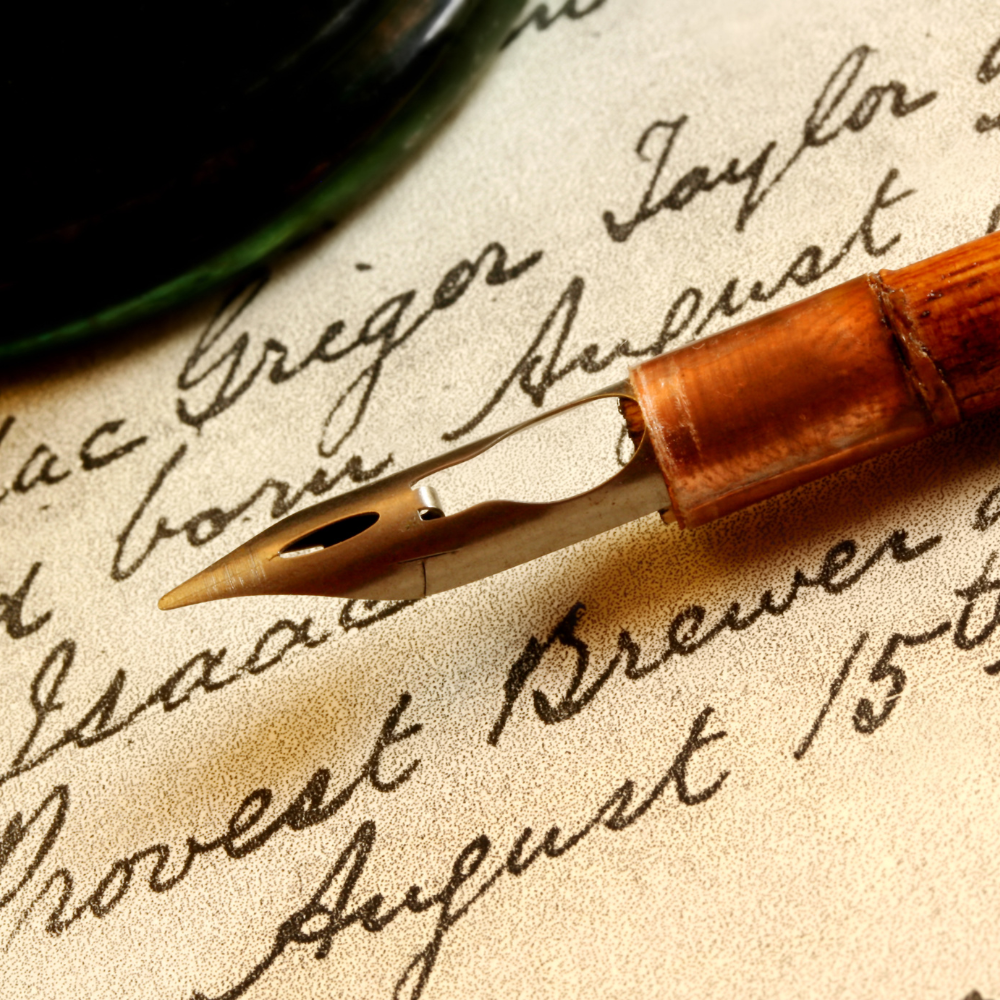

Explore and Sketch to Your Heart's Content
The choice of nib size is a crucial factor in sketching with fountain pens.
Different nibs can produce varying line weights and styles that add depth and character to artwork.
As an artist, experimenting with different nib sizes allows you to find one that best suits your personal style and the type of sketching you do.
Choosing the right nib size for sketching is a critical decision that can greatly influence your artistic expression.
From fine nibs for detailed work to broader nibs for thicker lines, each size offers its own advantages.
Fountain pens, dip pens, and technical pens provide a range of options to suit any artist's preference.
Remember to consider the ink and paper quality, as well as your personal style, when selecting your sketching tools.
With experimentation and proper care, you can find the perfect nib size to enhance your sketching experience.
Choosing the right nib size for sketching isn't as daunting as it may seem once you understand the differences between them.
When it comes to selecting the right nib size, it's crucial to consider what kind of illustration you want to create and the level of detail required.
Remember to start with a medium nib and get comfortable before experimenting with other sizes.
Cleaning your pens regularly can also prevent any ink or blockages that can inhibit the flow of your pen, resulting in clean and crisp lines.
Don't be afraid to push the boundaries and try out different nib sizes to see how they can transform your sketches.
With an array of materials, brands, and styles available, there is a perfect nib size waiting for you to discover it.
So, go ahead, explore, let your pen nibs take your creative journey to new heights, and start drawing!
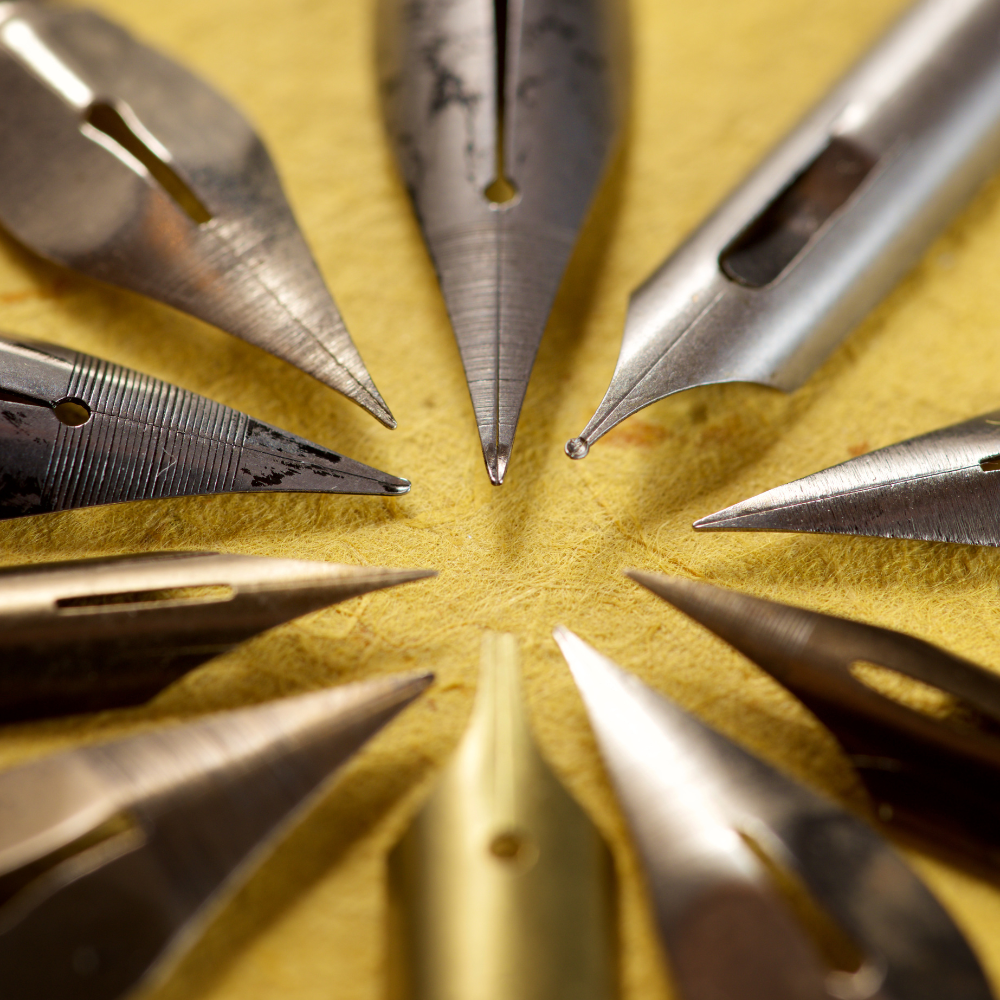
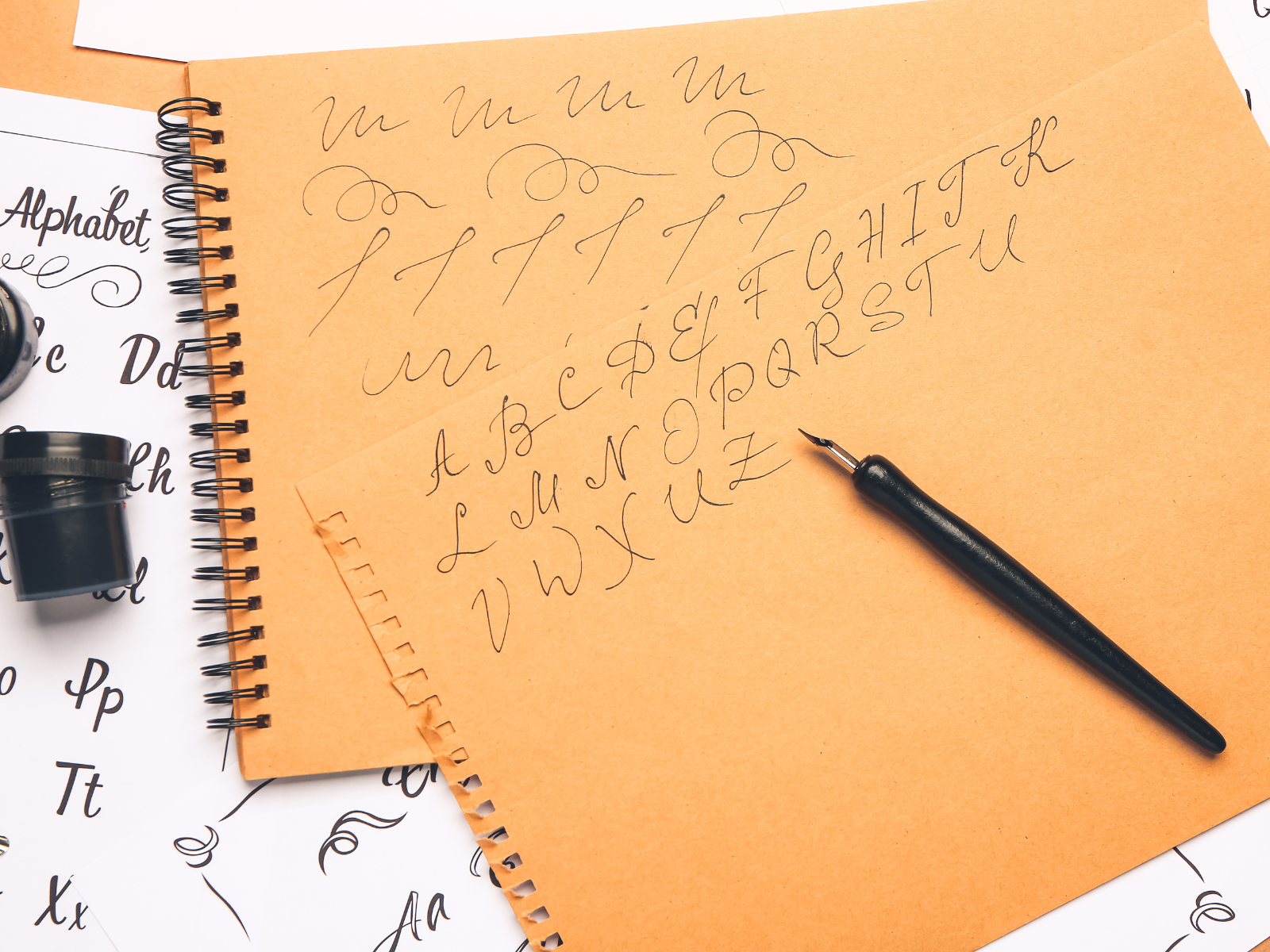
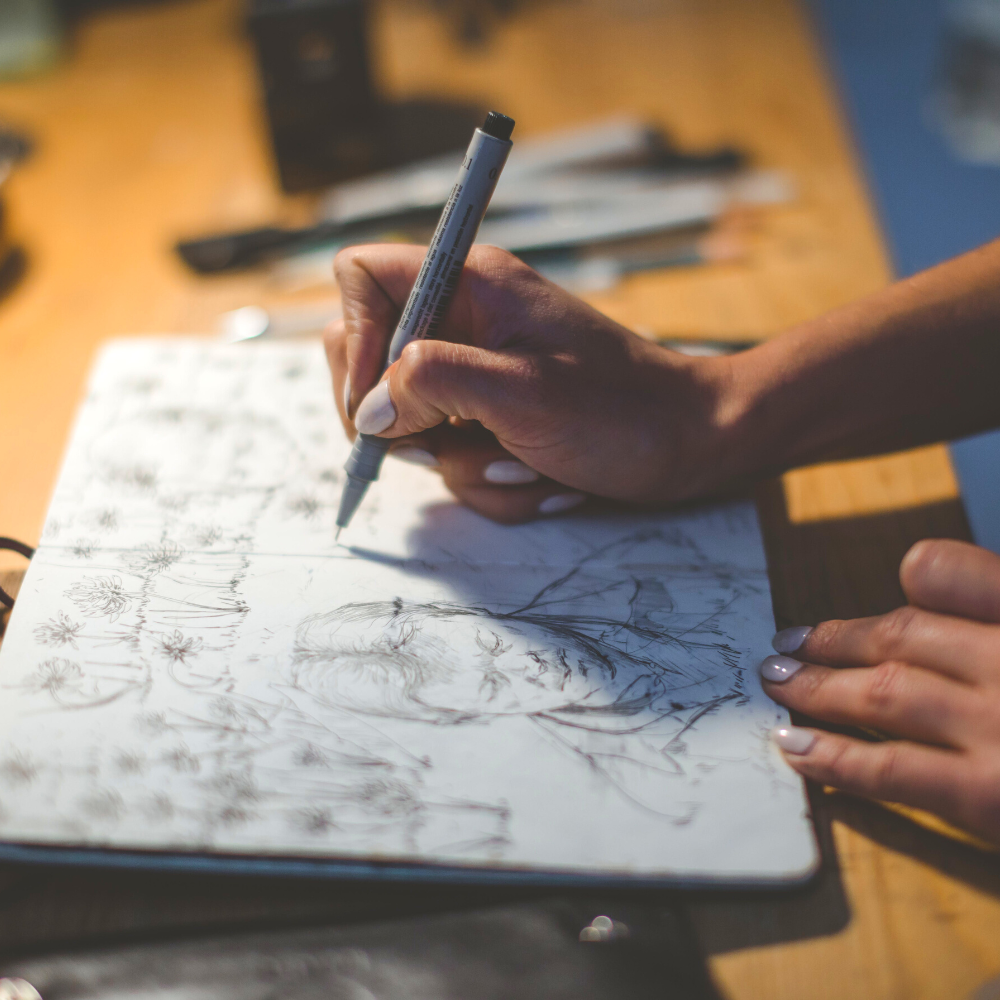
Interested in learning more about nib sizes? Check out The Goulet Pen Company's video!
Want even more content about creativity and art?
Be sure to check out all of our creative chronicles!
Ready to learn more about drawing with pens?
Check out some of our other articles:
-What type of pens do artists use?
-What is better than a fountain pen?
